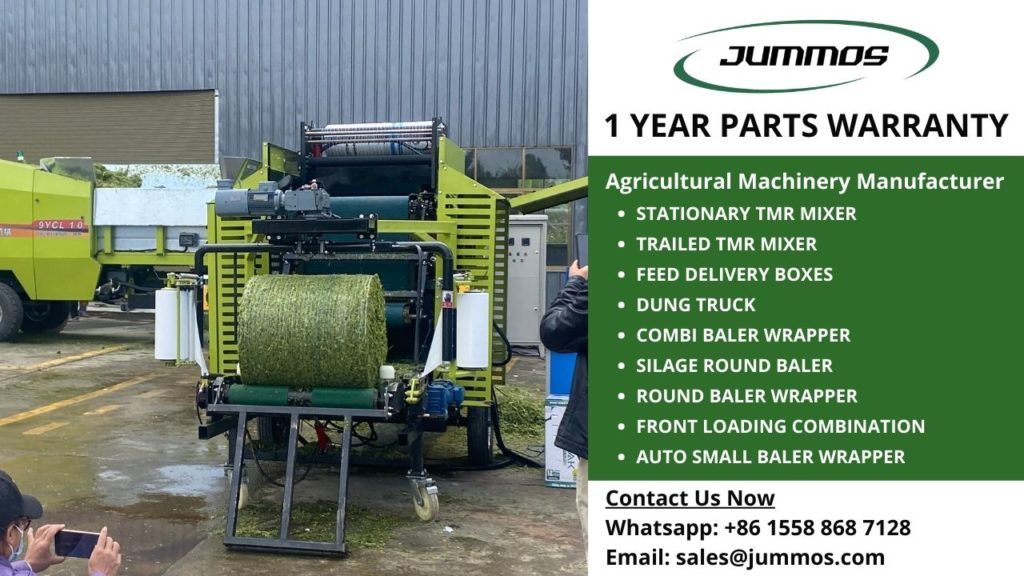Silage is a touch of magic on the farm. Large and small silage bales of various shapes are not only a decoration for the fields but also a source of energy for livestock. Sometimes farm owners also use it as a photo spot for visitors who may come from far away and find the piles of silage bales really amazing. Silage itself is actually one of the farmers’ efforts to provide food during the winter.
It is quite difficult to get livestock to graze in winter. When the snow is only 2 to 4 inches thick it makes it difficult for goats or cows to find their food. Especially when the snow gets thicker, the plants and forage are definitely full of wisps of white snow. The dry season also contributes to other obstacles. The fields are too dry, making livestock feed scarce.
So, farmers usually make silage or straw hay to preserve feed for 6 to 18 months ahead. Silage is the best feed during difficult times. However, there are still people who equate these two types of feed even though the ingredients are from the same fields.
Contents
The Difference Between Silage and Hay
Most farmers often use silage as the best organic feed for their livestock. They also provide hay as feed, but their livestock often find it difficult to digest it, so they need a special way to provide hay. Both consist of grass and can be the livestock food in difficult seasons such as times of drought or extreme cold. Then hay and silage can also help preserve forage.
Meanwhile, the two of them have quite prominent differences as follows:
Processing Method
Farmers can get hay by cutting and drying grass or other forage. Meanwhile, farmers make silage through a fermentation process and then store it in silos for some time before they use it as feed.
Preservation Method
You may often see piles of hay that only come in bales without plastic packaging. It could be that the amount of hay at that time was only small so farmers just formed it into bales without plastic wrapping. Then if you see big bales with plastic wrap that is strong, tight, and durable then that means silage. Farmers can use silage to supply feed for the next 6 months or 12 months.
Water Content
The water content in hay is usually only around 12% because the hay undergoes a drying process under the sun. While silage has a water content of between 40 to 60%.
Digestive Ability
Farm animals usually have any obstacles digesting hay. Meanwhile, livestock will easily digest silage feed which has a higher nutritional value than other feeds.
Storage Method
After cutting and drying the hay, we can get the hay in bales. Meanwhile, silage usually goes through a compaction process with heavy equipment and then airtight plastic wrapping with a baler wrapper machine but doesn’t need to go through a drying process.
Preserving Feed Silage
You can collect all the ingredients for making silage from around you. Usually these crops are annual crops such as corn, wheat, barley, sorghum, canola, millet, and oats. Then we will pack the plant cuttings into silage properly to remove the oxygen pockets. We need to get rid of oxygen because their presence can encourage feed spoilage. Here’s how to make silage with simple steps that are easy for you to follow.
Provide the Right Time
You can only get the best quality feed when the silage making process is in the right time. You must immediately cut the harvest of a plant and then put it in the hole that you prepared a few moments before. If you are late then the potential for spoilage is high. Then you also have to pay attention to proper equipment and sufficient stock of silage wrapping plastic before starting wrapping.
Apart from that, choosing the location for making silage is also important because this will affect the feed quality. Prepare the location when the weather is sunny and as soon as possible before harvest time arrives.
See the Condition of Plant
The plants that are in good condition at harvest and then you can use them as silage are those that are still green, have a slight yellowish tinge on the head, and usually have soft stems like cereal plants.
Move the Forage to the Packing Area
After you have chopped all the plants, you have to move them to a pile. Load all the plants into the silage truck and then you can unload them very close to each other.
Packaging
Proper packaging of silage only occurs during and after each harvest day. Someone will operate a tractor or large loader that will continuously collect and pack piles by machine work. You can also use a tractor or packing machine with double wheels for the best packing results. This can help fermentation activity and prevent spoilage.
Wrapping Bales
Immediately wrap the bales using appropriate silage film to cover the bales. The baler wrapper machine will usually wrap the silage in around 6 to 8 layers. The heavier the plastic, the more effective it is at holding oxygen and preventing rot. You can contact Jummos for the best baler wrapper in China.
Jummos has shipped the products overseas with years of experience, advanced technology, and durable guarantee. We can provide you 1 year warranty for all our baler wrapper machines. What do you need now? We have round baler wrapper, front loading combination machine, auto small baler wrapper, combi bale wrapper, and many more. We can send your orders wherever you are and at any time.
We also provide the best silage film and net wrap that can protect your bales in your farm. No matter how hard the bad weather hit your bales, our products will give the best protection as you wish.

